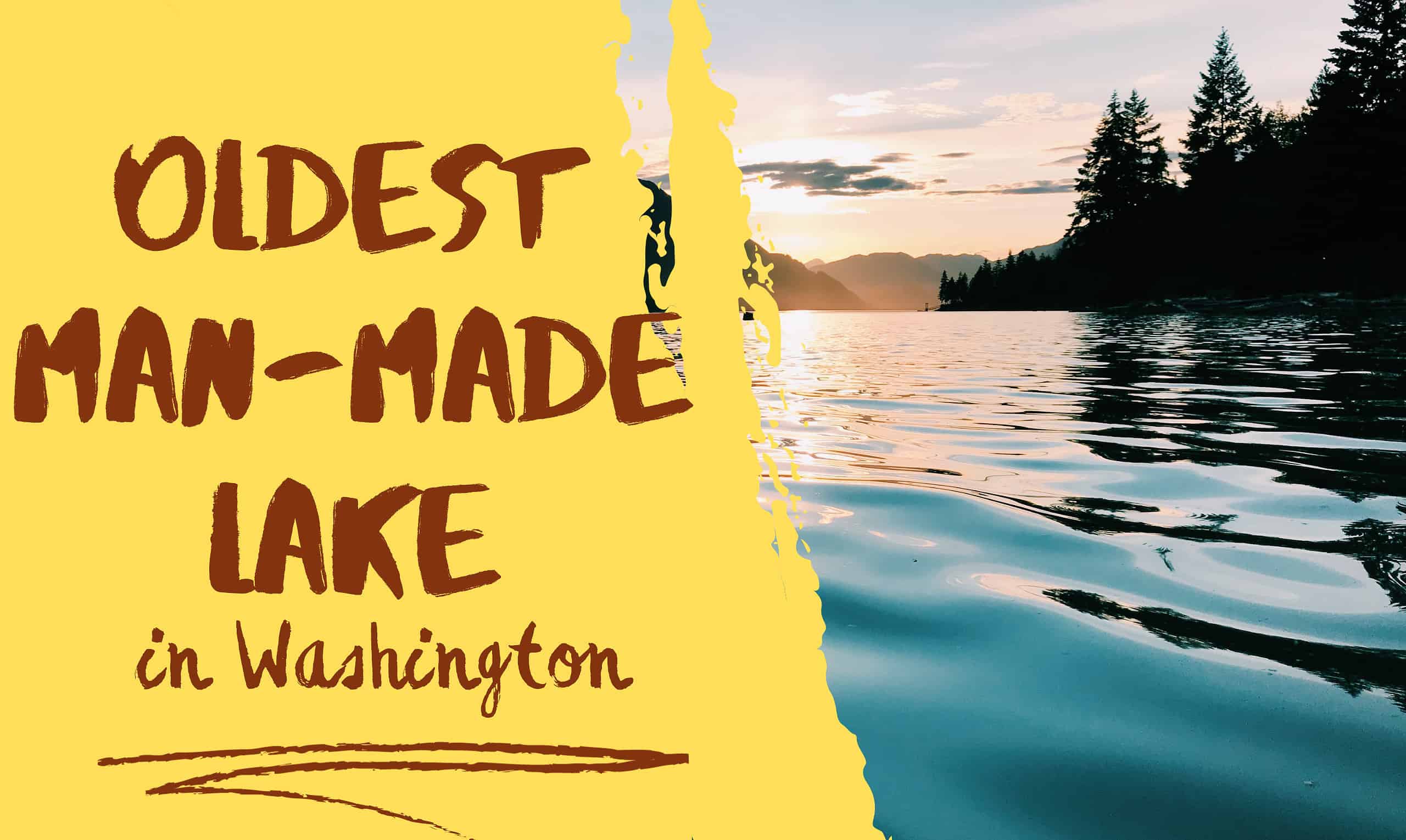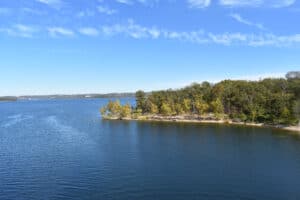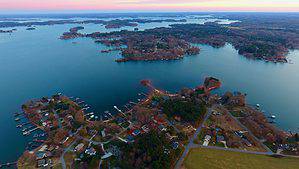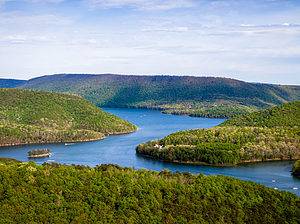The state of Washington is home to the third-deepest lake in the country, 3 orca families in the Pacific Ocean, and a national park that dates back to the end of the 19th century. Named for the first U.S. president, it is the 18th largest state and was added to the Union in 1889. It attracts over 90 million tourists annually with its national parks, amusement parks, museums, and restaurants. Warm weather is the perfect invitation for local recreational activities at Washington’s natural and manmade lakes.
The man-made lakes in Washington date back over 100 years, but do you know the oldest one? Dating back to 1911, the oldest man-made lake in Washington is Lake Tapps. Discover more about this old reservoir below!
The Oldest Man-Made Lake in Washington: Lake Tapps
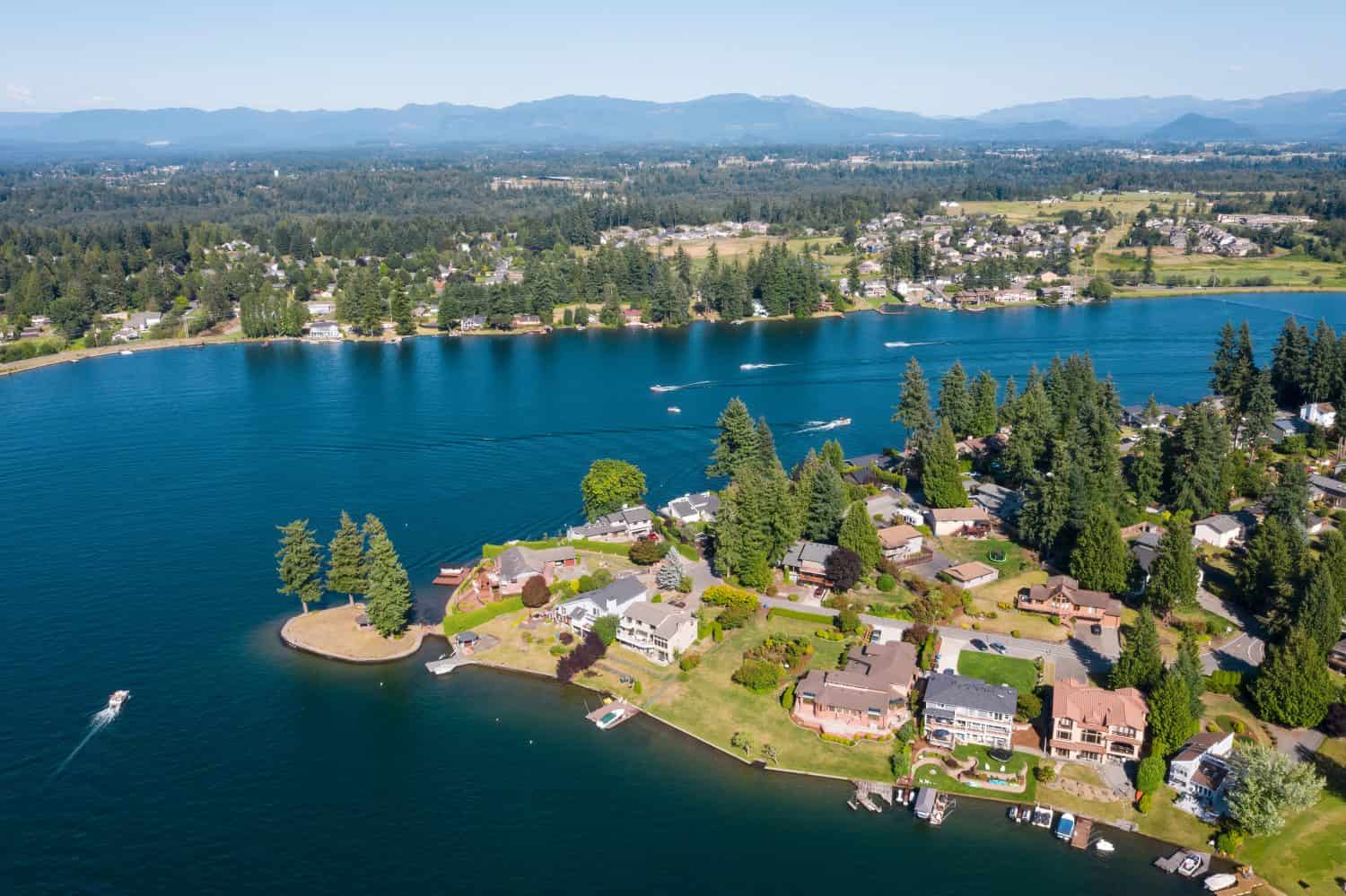
Most access to Lake Tapps is restricted to the communities along its coastline.
©Danita Delimont/Shutterstock.com
Lake Tapps is one of the most popular locations for water activities, including boating and kayaking. Originally created by Puget Sound Power & Light, multiple neighborhoods share access privately within the community. The only way to get general access to the lake is by using the northeast shore, which features a boat ramp to traverse the 2,433-acre lake. Locals can also visit the North Lake Tapps Park or Allan Yorke Park for water access to the manmade lake with a 45-mile shoreline with many inlets and peninsulas.
The original purpose of the lake was to harness hydroelectric power, diverting the White River flow as part of the White River Project. When it stopped power production in 2004, Cascade Water Alliance bought it 5 years later, adding to their purpose of offering a “safe, clean, reliable water supply to its 380,000 residents and more than 20,000 businesses.” The lake is not currently a source of drinking water.
Nowadays, this lake is known for its year-round fishing opportunities, enticing anglers with the hope of catching crappies, perch, and muskies. The northeast shore has a boat ramp for anyone who wants to journey to the center of the lake with their gear. If you decide to take a trip to the North Lake Tapps County Park, your view of Mount Rainier is unlike any other.
Where Is Lake Tapps: A Map
Lake Tapps is part of Pierce County. With the unique path of inlets, islands, and peninsula, the lake is east of Tacoma and west of Enumclaw. It covers about 4.5 square miles, receiving water from the White River via flume.
Pierce County: The Home Of Lake Tapps
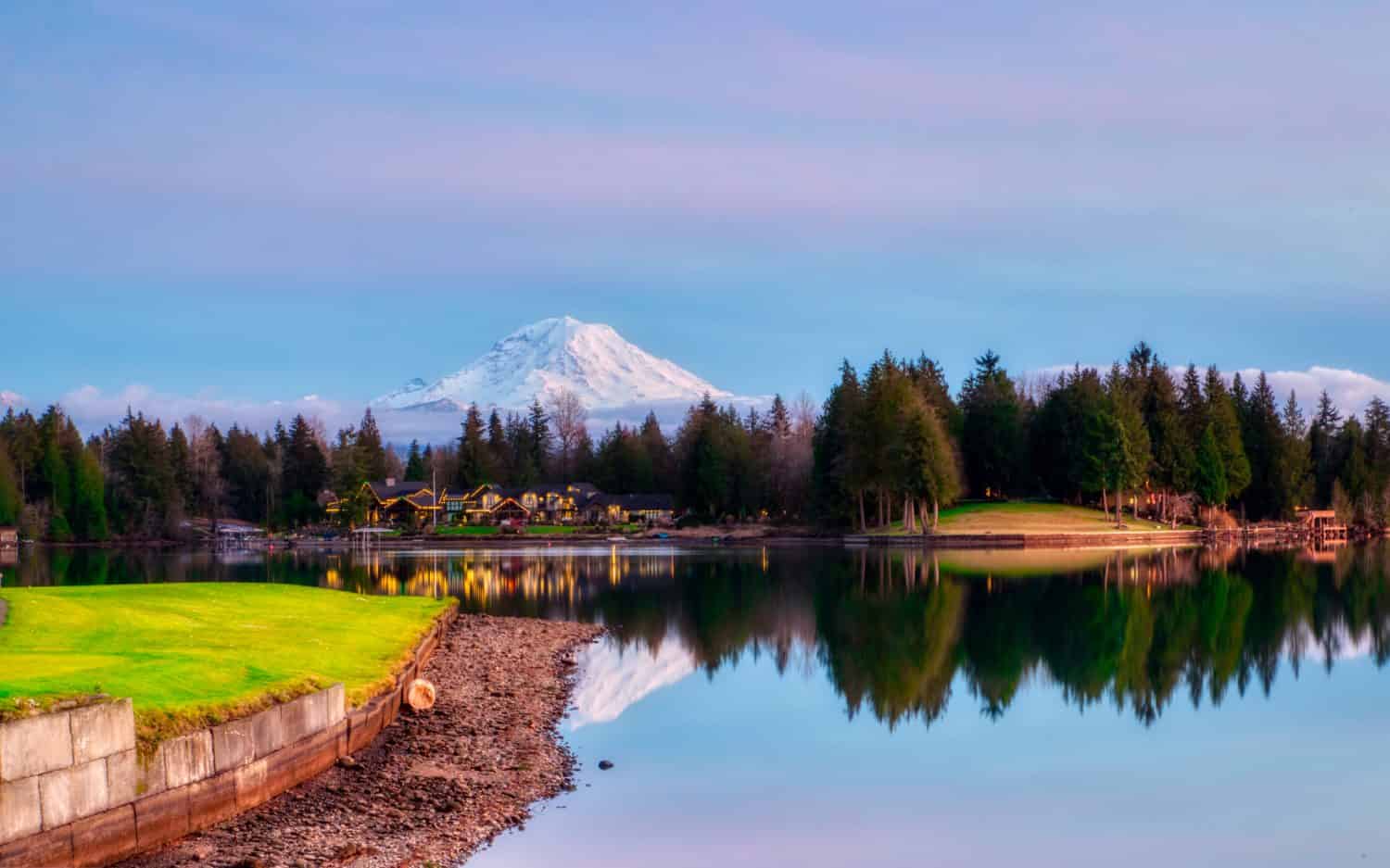
If you look south of Lake Trapps, you can see one of the most well-known volcanos in North America.
©Nick Alvarez/Shutterstock.com
In Pierce County, Lake Tapps is just one of over 180 lakes, ponds, and reservoirs. With 23 cities within the county’s limits, there are 925,708 residents living there now. The only county with a higher population than Pierce County is King County, which has 2.2 million residents.
One of the biggest tourist attractions in Lake Tapps is Mount Rainier, a volcano and the tallest mountain of the Cascades. While it hasn’t erupted since the middle of the 19th century, geologists believe it will erupt again at some point. Lake Tapps is one of the most prominent reservoirs locally, but Pierce County also has several arts organizations to attract tourists.
Wildlife Near Lake Tapps
Tiger Muskellunge
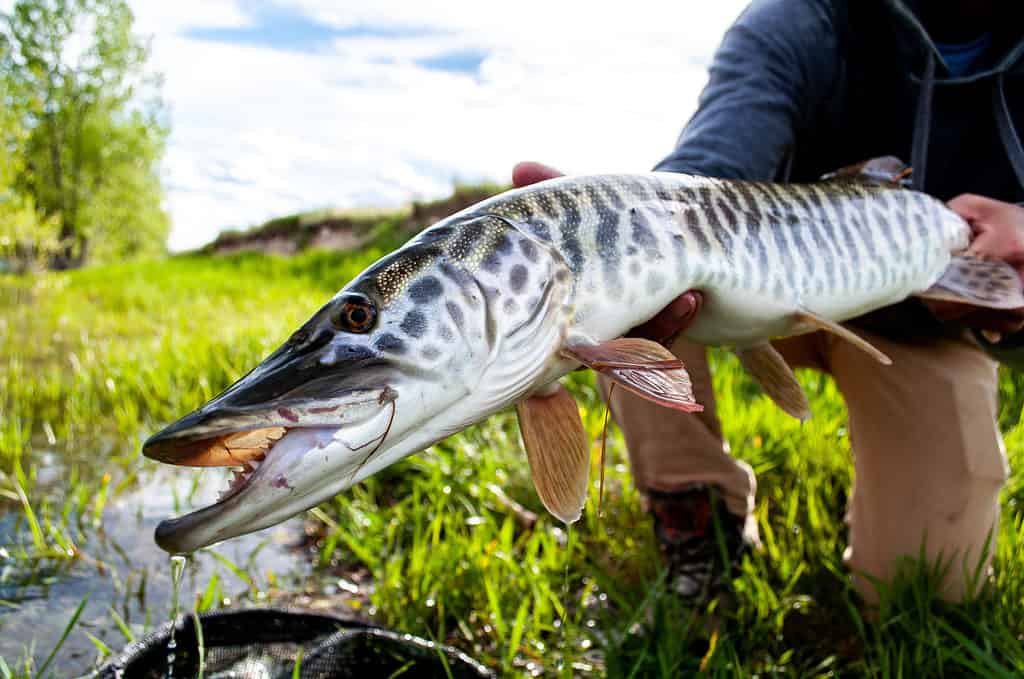
The
tiger
muskellunge is also known as the “fish of 10,000 casts.
©Jennifer de Graaf/Shutterstock.com
Tiger muskellunges are carnivorous, living in the northern United States in freshwater sources. They prefer quiet rivers and still water, including the Great Lakes. Washington is one of many states that stock tiger muskies. However, the Washington Department of Fish & Wildlife requires any catch under 50 inches to be released back into the lake.
Water temperature and availability of food play a role in how quickly tiger muskies grow. When temperatures drop below 68 degrees Fahrenheit, the likelihood of cannibalism rises. Their cylindrical body can exceed 45 inches in length, depending on their environment. The oldest manmade lake in Washington is one of only 7 lakes that these fish live in.
Yellow Perch
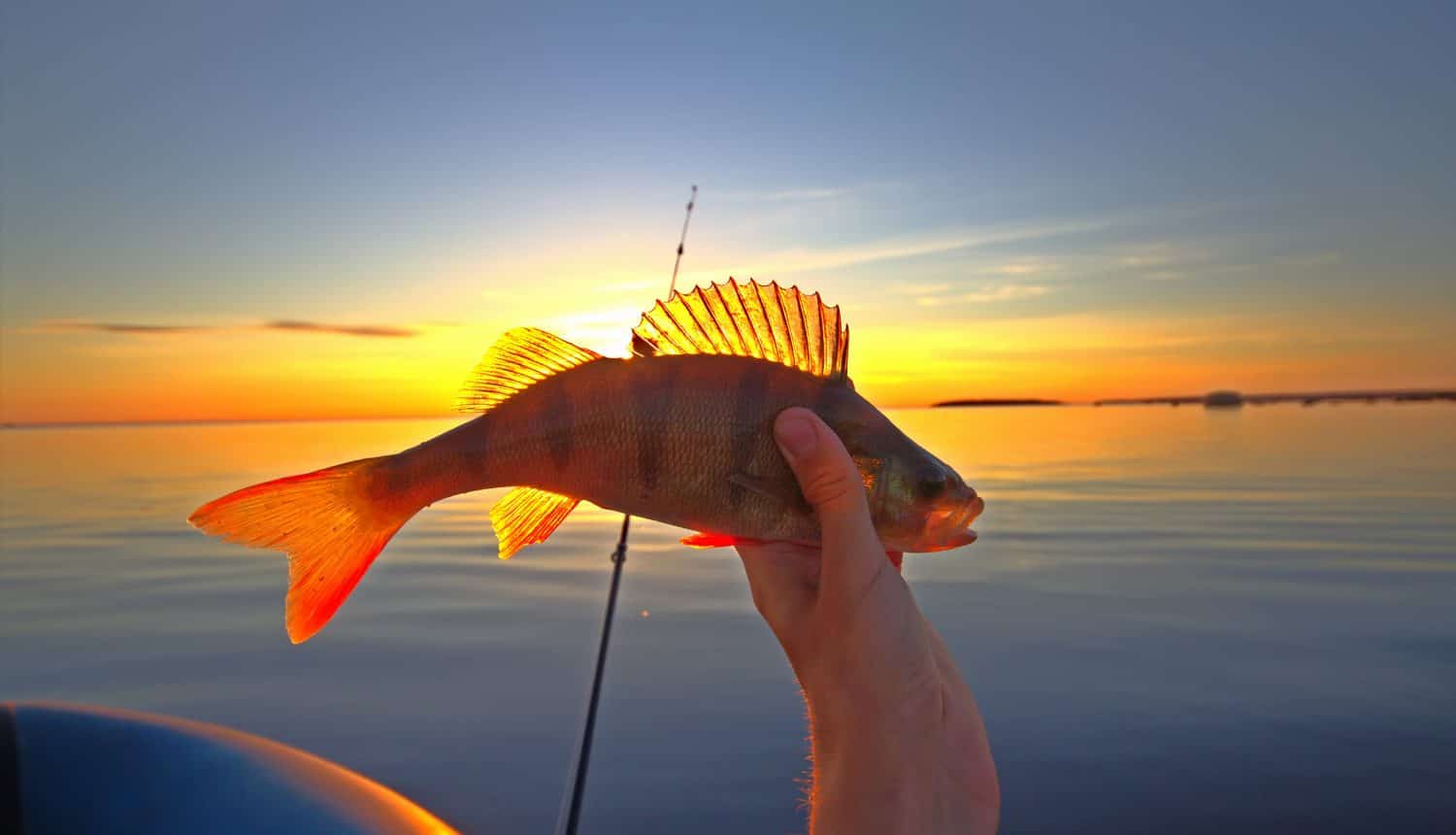
The heaviest yellow perch ever caught in the world was 4 pounds 3 ounces.
©Maximillian cabinet/Shutterstock.com
Yellow perch prefer slow rivers and streams or still bodies of water, making Lake Tapps an ideal home. At 4-10 inches long, these small fish are easy to identify by their separate dorsal fins and compressed golden body. As a sport fish, they are an easy but unique challenge for any type of angler, and their mild flavor makes them an ideal fish to harvest commercially.
Black Crappie
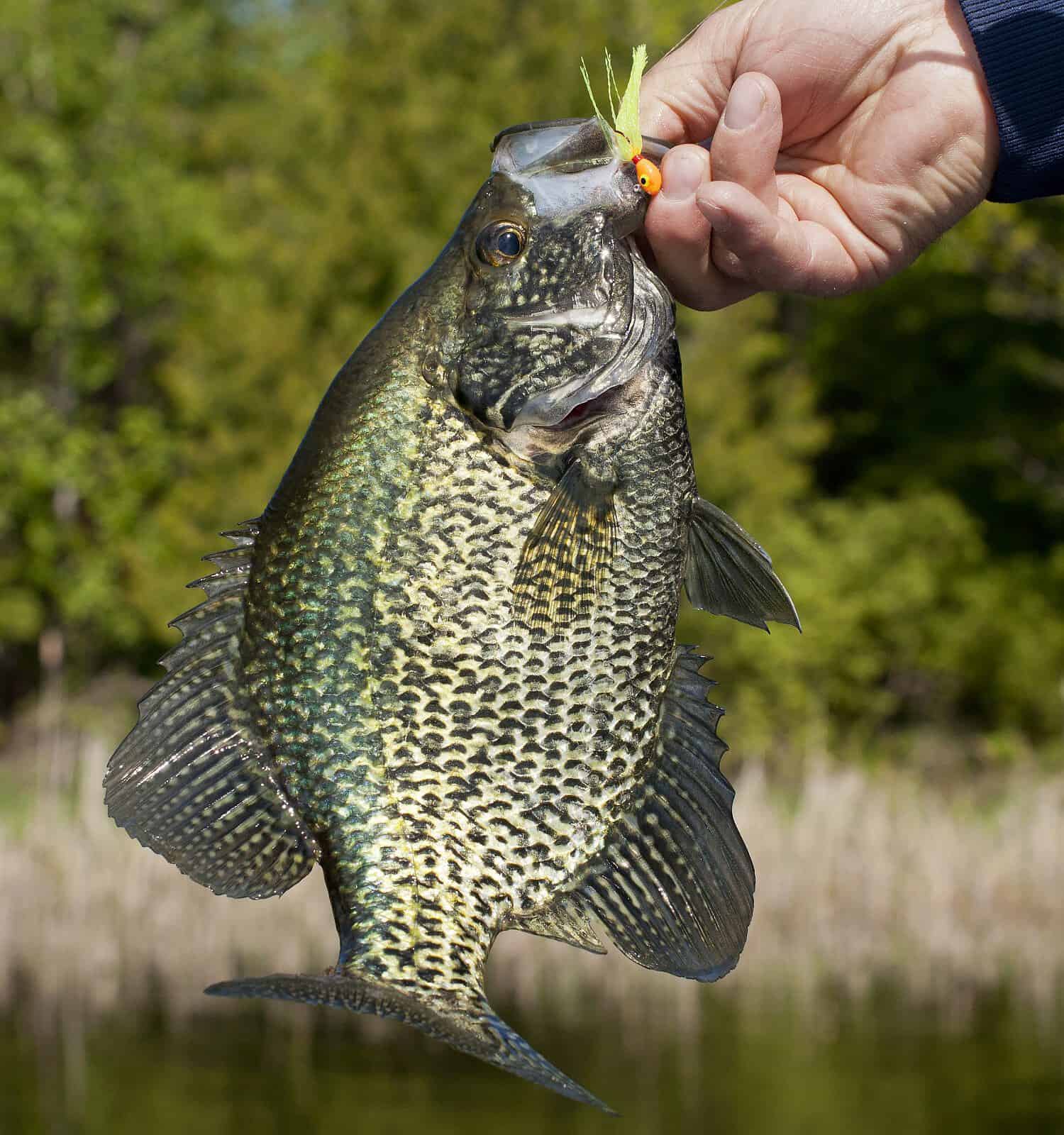
Black crappies prefer to feed in the early hours of the morning or late at night after midnight.
©Steve Oehlenschlager/Shutterstock.com
Another freshwater fish in Lake Tapps is the black crappie, measuring about 4-8 inches long at its adult size (though the biggest ever caught was 19.3 inches). It prefers to live in lakes, reservoirs, and other areas with relatively calm waters. They are easy to catch with a minnow rig or small jig. Since they aren’t listed with the IUCN as an at-risk species, anglers can freely fish for them with fewer restrictions than other species in the lake.
Other Man-Made Lakes And Reservoirs That Are 100+ Years Old
Here are a few other areas that are almost as old as Lake Tapps.
- Kachess Lake (1912)
- Long Lake (1915)
- Chester Morse Lake (1915)
Thank you for reading! Have some feedback for us? Contact the AZ Animals editorial team.

